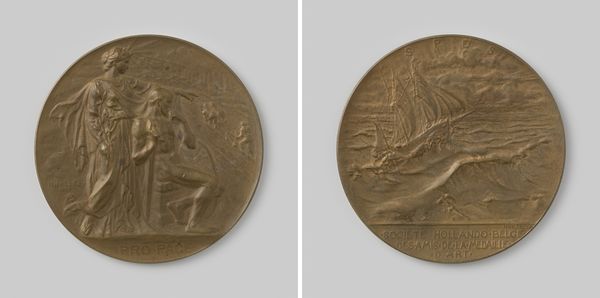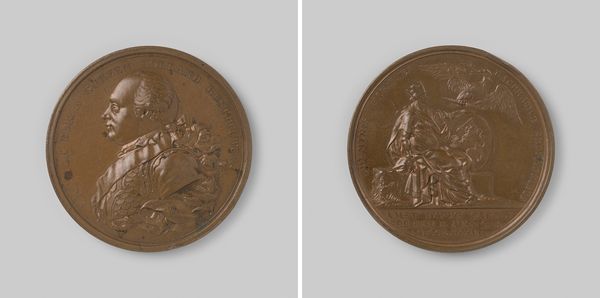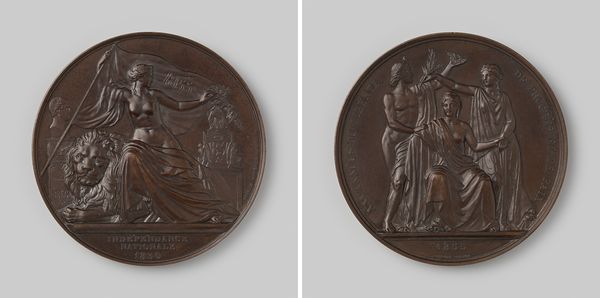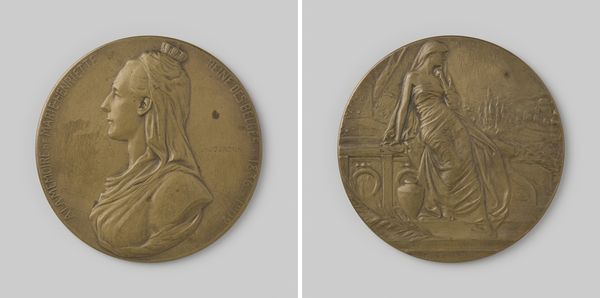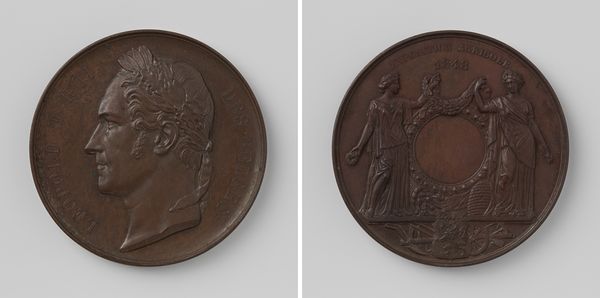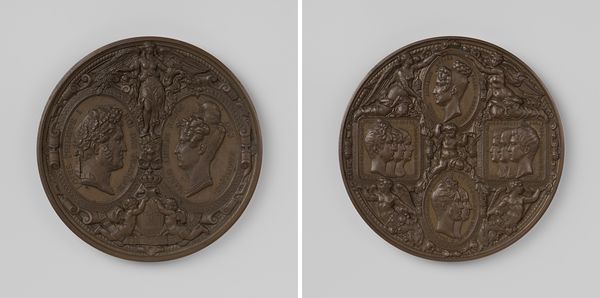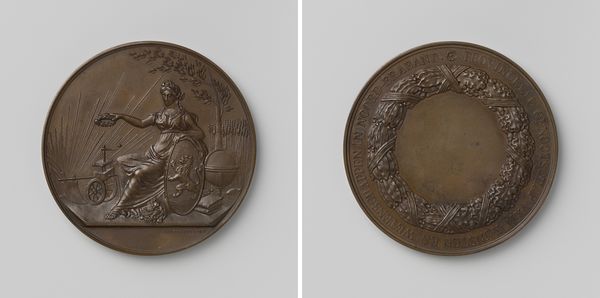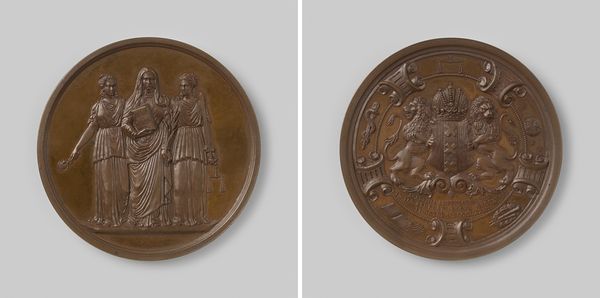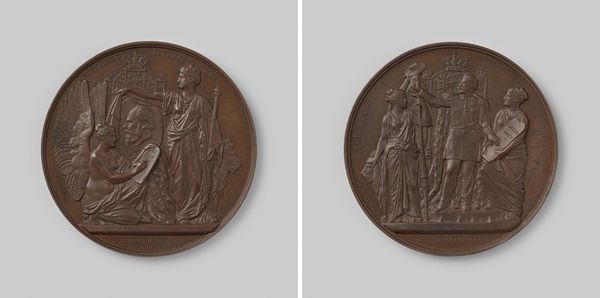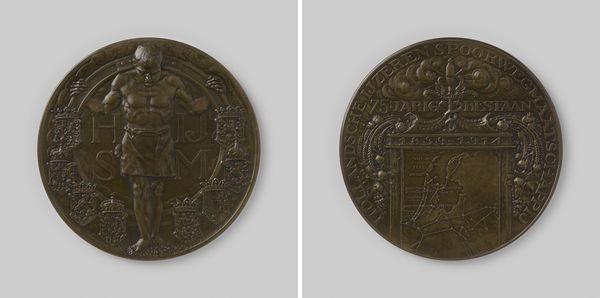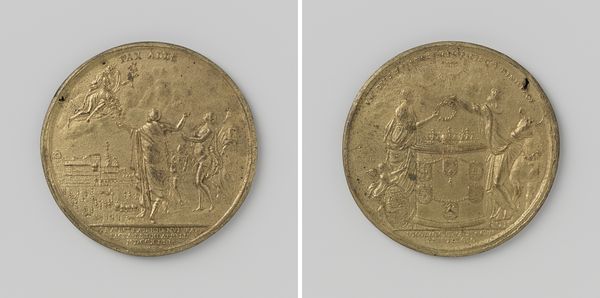
metal, relief, bronze, sculpture
#
portrait
#
art-nouveau
#
metal
#
sculpture
#
relief
#
bronze
#
sculpture
#
ceramic
#
history-painting
Dimensions: diameter 6.5 cm, weight 109.04 gr
Copyright: Rijks Museum: Open Domain
This bronze medal, made by Johannes Cornelis Wienecke in 1909, commemorates the birth of Princess Juliana. Look at the way the figure on the front seems to emerge out of the surface of the medal; the artist is carving back the material to reveal the form in a way that feels incredibly physical and direct. I love how the texture of the metal shifts and changes with the light. In areas like the figure's draped clothing, the surface is smooth and reflective, while in others, like the surrounding foliage, it’s rougher and more matte. Wienecke has used these subtle shifts in texture to create depth and dimension. Notice the way the figure is holding the baby. The folds in the draped fabric around her arms are rendered with such care. It gives the whole piece a sense of warmth and tenderness, as if the artist is celebrating the intimate bond between mother and child. This focus on the human figure reminds me of Auguste Rodin's work, which explored similar themes of emotion and physicality. What do you see?
Comments
No comments
Be the first to comment and join the conversation on the ultimate creative platform.
